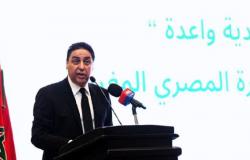“Today, we have frequency forecasting models which, thanks to the machine learning, detect micro-installations ten to fifteen seconds before they reach the critical threshold”.
Interview : Charif El Jazouli, Manager IA, data at the French consulting cabinet SIA decrypts behind the scenes of high -tension energy solidarity. He explains to us in a detailed exclusive interview with what artificial intelligence could have made the difference. For the time being, Brussels is already preparing an update of a pilot system like what Australia already has to impose predictive surveillance on a continent. In Morocco, ONEE feeds the Energyip algorithms of Siemens/Atos with the statements of intelligent meters in order to provide for charge and frequency, which accelerates the support decision.
Alm: Before talking about algorithms, let us recall the facts. What happened last Monday April 28?
Charif El Jazouli: At 12:33 p.m. Monday, April 28, the Iberian Peninsula lost around 15 GW, or almost 60% of the Spanish demand in just five seconds. The frequency fell to 48.5 Hz, triggering automatic protections in Portugal and separation from the French network. It is the worst breakdown in Western Europe since the 1970s.
The looks turn to the Franco-Spanish interconnection. Was it the weak link?
Not exactly. The Trans-Pyénée link “won” because it suddenly saw more power pass than its dynamic threshold. But this dropout is just a symptom. The root cause seems to be a double loss of solar production in the Southwest Spanish, followed by a poorly amortized electric oscillation.
How could artificial intelligence have made the difference?
Today, we have frequency forecasting models which, thanks to the machine learning, detect micro-installations ten to fifteen seconds before they reach the critical threshold. These models are continuously training on the real time flows of Red Eléctrica and Entso-E. Such a system already pilots the Australian network. The latter could have initiated targeted load shedding orders rather than allowing the mechanical relays to act slower.
Why were these tools operational on Monday?
Because they are not yet standardized. European managers are experiencing, but the network code does not make “IA-Remèdes” compulsory. The blackout has changed the situation today. Brussels is already preparing an update to impose predictive monitoring on the continent.
Recurrent criticism aims at the boom of wind and solar without inertia. What do you answer?
The problem is not the lack of inertia, it is the lack of ruled inertia. “Grid-forming” or synchronverters converters imitate the rotary behavior of classic turbines and inject programmable synthetic inertia in less than 200 ms. The latter stabilize even when the thermal power plants are stopped.
How could food be restored so quickly?
-Thanks to regional solidarity. At 1 p.m., Red Eléctrica triggered the assistance agreements. RTE pushed up to 2 GW to Catalonia and the Basque Country, while Morocco has injected around 900 MW via the Tarifa-Fardioua double bond, almost 40% of its park available at this time.
Without these flows, the Baléare archipelago should have been isolated, which would have slowed down the recovery.
What is the concrete role of AI in this cross -border mutual aid?
Each operator has its own digital twin powered by IA. Red Eléctricrica operates the 3dexperience platform to reproduce its high voltage network in almost time and test, before application, emergency maneuvers. In Morocco, ONEE feeds the Energyip algorithms of Siemens/Atos with the statements of intelligent meters in order to provide for charge and frequency, which accelerates the support decision. On the European side, RTE and REE participate in the Twineu program, which aims to federate these twins in order to automatically share stability calculations by 2027.
During the blackout, these local models served as a test bench to validate, in a few tens of seconds, the injection of around 2 GW from France and 900 MW from Morocco, before the dispatches do the final orders.
Beyond the technique, the economic impact is heavy …
The first estimates speak of € 1.6 to € 1.8 billion. Everything that moves to electricity-metro, iron, data-center, irrigation-frozen. Each time of breakdown costs around € 250 million in GDP. Restoration algorithms now prioritize critical sectors; The objective is to reduce the “useful cutting duration” by 60% by 2027.
Will South North Cooperation with Rabat are amplified?
Yes. Madrid and Rabat signed a protocol to build a third interconnection of 700 MW through the Strait of Gibraltar, in addition to the two current 400 kv connections put into service in 1997 and 2006. The commissioning is targeted before 2026; The cost (around $ 170 million) will be shared equally between Red Eléctrica (REE) and the National Electricity Office (ONEE). This new corridor will allow Spain to export its nocturnal wind surpluses and, conversely, to secure European winter supply thanks to Moroccan cutting -edge capacities.
As an ia × energy specialist, what did you feel?
This is a reminder. We, engineers, repeat that the energy transition must be accompanied by a digital transition from the network. Seeing three countries and a continent collaborating in a few hours proves that technology is ready. The challenge is to anchor this culture of resilience in regulations and budgets.
Receive the latest news from today Morocco directly on WhatsApp








